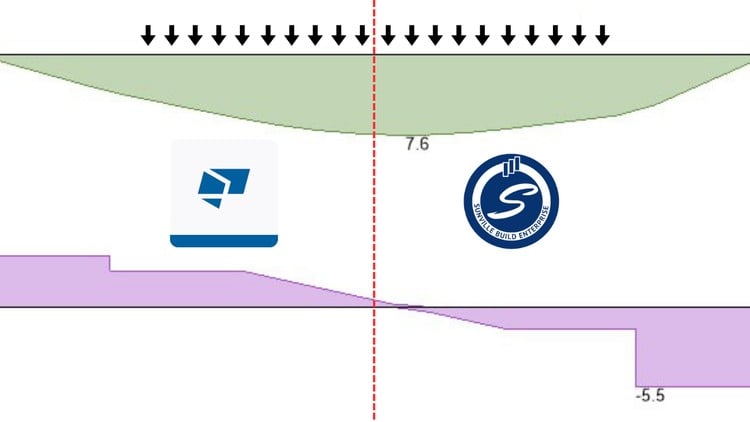
Produce Professional Quality Manual Calculations
What you will learn
Basics of Tekla TEDDS
User Interface Overview and Project Setup
Analysis of Simple and Continuous Beams
Analysis of Trusses
Analysis of Frames
Design of Beams and Columns
Design of Slabs and Walls
Design of Foundation and Retaining Walls
Add-On Information:
Note➛ Make sure your 𝐔𝐝𝐞𝐦𝐲 cart has only this course you're going to enroll it now, Remove all other courses from the 𝐔𝐝𝐞𝐦𝐲 cart before Enrolling!
- Unlock the power of automated structural calculations with Tekla TEDDS, moving beyond tedious manual methods.
- Gain proficiency in building robust, auditable calculation documentation that meets industry standards.
- Master the integration of 2D and 3D structural models for seamless data transfer and analysis.
- Develop the ability to efficiently check and verify complex structural designs generated by other software.
- Learn to generate comprehensive reports that clearly present design assumptions, results, and code compliance.
- Understand how to implement various international design codes and standards within the TEDDS environment.
- Explore the capabilities of TEDDS for specialized structural components beyond basic elements.
- Enhance your problem-solving skills by applying logical thinking to diverse structural analysis challenges.
- Discover techniques for optimizing structural designs for material efficiency and cost-effectiveness.
- Build confidence in presenting complex structural data in a clear and understandable format.
- Learn to customize and create your own calculation templates tailored to specific project needs.
- Acquire the skills to perform sensitivity analyses and evaluate the impact of varying design parameters.
- Understand the importance of quality control in structural calculations and how TEDDS facilitates this.
- Become adept at interpreting and applying results from advanced structural analysis.
- Develop a strong foundation in best practices for structural engineering documentation.
- PROS:
- Significant time savings compared to manual calculation methods.
- Reduced risk of calculation errors through automation and built-in checks.
- Enhanced professionalism in client-facing documentation.
- CONS:
- Requires a learning investment to fully leverage its advanced features.
English
language